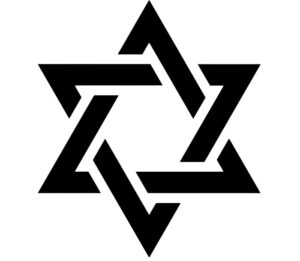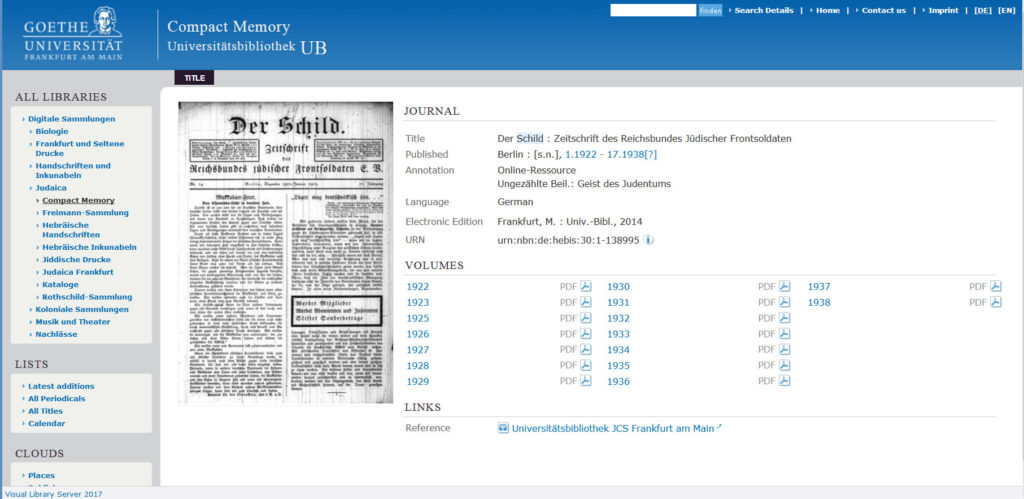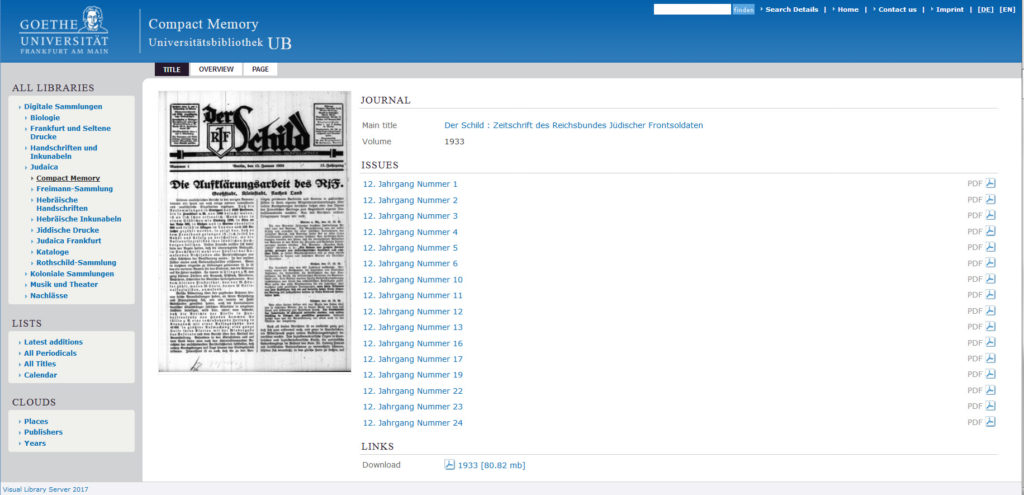“And we, the Jewish front-line soldiers of the old German army,
who on the other side, in the trenches opposite,
took part in the defense of our homeland with our lives and bodies,
we visit this silent and yet so convincing memorial at Douaumont
with awe-struck hearts.”

There are many ways to contemplate the past, one of which is from both “within” the past itself, and, from the perspective of the present. This is so for my seven posts about the military service of Jews in the French Army – the Armée de terre – in the First World War. Four of these posts (here, here, and here, pertaining to a 1918 essay by Maurice Barres, and here, pertaining to a 1915 news item) explore the military service of French Jews as recorded during the war itself, while the other three – pertaining to a discovery from a compilation of information about Jewish military casualties, and, the legend surrounding Rabbi Abraham Bloch (two posts, one in English and the other in French) are based on genealogical and historical research from 1921, and, 1999, respectively.
“This” post, however, comes from a moment in time between the First and Second World Wars: It presents a news item / editorial that appeared on the front page of Der Schild on August 7, 1936, concerning the planned construction of a memorial dedicated to the memory of the Jewish soldiers of France who fell in the Battle of Verdun, and more generally, in commemoration of all French Jewish soldiers who fell in battle between 1914 and 1918. Der Schild’s article is wistful is if not near-inexpressibly poignant on multiple levels: First, it pertains to the commemoration of Jewish fallen by a former enemy of Germany. Second, even before the advent of the Third Reich and by definition certainly not after, no analogous monument for the Jewish military fallen of the German was – to the best of my knowledge – even created in that country. And third, in light of what we in 2025 now indelibly* know about the impending future of the Jews of Germany (Jewish veterans of the Great War among them) and European Jews in general, in the years subsequent to 1933.
(* Truth be told, probably not indelible after all. Or to be more accurate, while indelible to the Jewish people, for the rest of the world, not so much.)
The monument was completed just under two years later after the appearance of Der Schild’s article, as described in this news item from the Jewish Telegraphic Agency, which was published on June 20, 1938:
Monument to Jews Who Fell in War Unveiled Near Verdun
Paris, June 19. (JTA) — Condemnation of persecution and advice to the Jews to remember history, to be patient and not to despair were voiced today by Deputy Caesar Campinchi, speaking on behalf of the French Government during ceremonies at the unveiling of an imposing monument at Douamont, near Verdun, to 6,500 French Jews and 2,000 Americans and British Jews of the Foreign Legion who fell in the war.
The unveiling was the main feature of the national celebration of the twenty-second anniversary of the battle of Verdun. It was attended by 1,000 Jewish and non-Jewish veterans with General Andre Weller, a Jew, presiding. Other speakers included Government officials and the mayor of Douaumont.
Deputy Campinchi assailed the racial theories “practiced in other countries” and declared that France stood for the ideal of equality of all people, an ideal for which, he said, Jewish soldiers fell.

Here are three images of the monument.
This undated picture is Publ. Combier postcard 5631, the sepia tone suggesting that it was printed between the late 30s and late 50s. (Just a guess.)
This excellent image is from Wikimedia Commons…
… while the following glowing tafofil image is from Facebook.
But first… The text standing in relief on the monument’s base states:
AUX FRANCAIS, ALLIES ET VOLONTAIRES ETRANGERS ISRAELITES
– 1914 – MORTS POUR LA FRANCE – 1918 –
…translation…
DEDICATED TO THE FRENCH, ALLIED, AND FOREIGN ISRAELITE VOLUNTEERS
– 1914 – DIED FOR FRANCE – 1918 –
And so, the article as it appeared on the front page of Der Schild, following by English-language translation, and, the original German.
Symbol of Jewish honor
The memorial at Douaumont
The shield
August 7, 1936
Number 32
“It looks down on the graves at a place of world history,
where German and French soldiers,
German and French Jews among them,
are laid to eternal rest, just as the bullet, the grenade, the gas struck them back then.”
Only recently – we read it in the newspapers – former front-line soldiers from the armies involved met on the battlefields of Verdun and exchanged words of respect for the former enemy, words of camaraderie and commitment to an honorable peace at this site consecrated by endless streams of precious blood. And now we hear that in the future a towering memorial will be a silent yet speaking witness to Jewish fulfillment of duty, Jewish blood sacrifice, Jewish honor at this very site. A huge memorial, which owes its existence to the exemplary initiative of the Israelite religious community of the Meuse department, will rise near Douaumont, west of the cemetery, facing east, for marriages and in remembrance of the Jews who fell for France.
The memorial, which is already being built, was designed by an old front-line soldier, the architect Geo Stern. It has the shape of a huge wall, 30 m long and 7 m high; at its front are the two tablets of the law with the 10 commandments.
This memorial will thus look down silently on the greatest battlefield in history, on which 400,000 heroes fell for their fatherland.
Inside, each of the 10,000 names of the Jews who fell for France will be carved in the stone and illuminated by the glow of an eternal lamp.
Edmond Fleg, the well-known Jewish-French writer, calls the memorial “worthy of those who, in defending France, also defended our honor at the cost of their lives.”
In this spirit, French Jewry proudly remembers its sons who fell for their fatherland. And we, the Jewish front-line soldiers of the old German army, who on the other side, in the trenches opposite, took part in the defense of our homeland with our lives and bodies, we visit this silent and yet so convincing memorial at Douaumont with awe-struck hearts.
It looks down on the graves at a place of world history, where German and French soldiers, German and French Jews among them, are laid to eternal rest, just as the bullet, the grenade, the gas struck them back then. Where human voices are silent, this Jewish memorial speaks; speaks the word of God from the Ten Commandments, which were proclaimed to mankind by Israel…

Wahrzeichen jüdischer Ehre
Das Mahnmal am Douaumont
Der Schild
August 7, 1936
Number 32
Erst kürzlich haben sich – wir lasen es in den Zeitungen – auf den Schlachtfeldern von Verdun ehemalige Frontkämpfer der beteiligten Armeen getroffen und Worte der Achtung vor dem einstigen Gegner, Worte der Kameradschaft und Bekenntnisse zu einem ehrenvollen Frieden an dieser, durch unendliche Ströme kostbaten Blutes geweihten Stätte gewechselt. Und nun hören wir, dass künftig an eben dieser Stätte ein – ragendes Ehrenmal stummer und doch sprechender Zeuge jüdischer Pflichterfüllung, jüdischen Blutopfers, jüdischer Ehre sein wird. Ein gewaltiges-Mahnmal, des seine Entstehung der vorbildlichen Initiative der Israelitischen Kultusgemeinschaft des Departments Meuse verdankt, wird sich bei Douaumont, westlich des Gräberfelds, mit Front nach Osten, erheben, zu Ehen und zur Erinnerung an die für Frankreich gefallenen Juden.
Der Entwurf des Ehrenmals, das sich bereits in Ausführung befindet, stammt von einem alten Frontkampfer, dem Architekten Geo Stern. Es hat die Gestalt einer gewaltigen Mauer, die 30 m lang und 7 m hoch ist; an ihrer Stirnseite befinden sich die beiden Gesetzestafeln mit den 10 Geboten.
So wird dieses Ehrenmal auf das gröszte Schlachtfeld, das die Geschichte kennt und auf dem 400 000 Helden für das Vaterland gefallen sind, still berniederschauen.
Im Innern wird jeder der 10 000 Namen der für Frankreich gefallenen Juden in den Stein gemeisselt und vom Schimmer de ewigen Lampe bestrahlt sein.
Edmond Fleg, der bekannte jüdsich-französische Schriftsteller, nennt das Erinnerungsmal „würdig derer, die, indem sie Frankreich verteidigten, gleichzeitig unsere Ehre mit dem Preise ihres Lebens verteidigt haben“
In diesem Geiste gedenkt Frankreichs Judentum stolz seiner für ihr Vaterland gefallenen Söhne. Und wir jüdischen Frontsoldaten der alten deutschen Armee, die wir auf der anderen Seite, in den Gräben gegenüber, mit Leib und Leben an der Verteidigung unseres Heimatlandes teilnahmen, wir grossen dieses stumme und doch so überzeugende Mahnmal am Douaumont-ehrfürchtig bewegten Herzens.
Es blickt an weltgeschichtlicher Stätte auf die Gräberfelder herab, zu denen deutsche und französische Soldaten, deutsche und französische Juden unter ihnen, zur ewigen Ruhe gebettet sind, wie die Kugel, die Granate, das Gas sie damals getroffen. Wo Menschenstimmen schweigen, spricht dieses jüdische Mahnmal, spricht das Wort Gottes aus den Zehn Geboten, die durch Israel der Menschheit verkündet wurden…

Here’s an overview of how to access Der Schild at Goethe University, excerpted from my post “Infantry Against Tanks: A German Jewish Soldier at Cambrai, November, 1917“, of September 9, 2017. (It certainly seems to have come in handy, just over seven years later!)
“Stories and depictions of World War One combat, composed both during and after the “Great War”, are abundantly available in print and on the web.
“A fascinating source of such accounts – but even moreso a source particularly; poignantly ironic – is the newspaper Der Schild, which was published by the association of German-Jewish war veterans, the “Reichsbundes Jüdischer Frontsoldaten”, from January of 1922 through late 1938, the latter date paralleling the disbandment of the RjF. Der Schild is available as 35mm microfilm at the Dorot Jewish Division of the New York Public Library, and in digital format through Goethe University Frankfurt am Main.
“The screen-shot below shows the Goethe University’s catalog entry for Der Schild, which allows for immediate and direct access of the library’s holdings of the newspaper. All years of the publication, with the exception of 1924, are available; all as PDFs.
 “Of equal (greater?!) importance, accessing digital holdings is as simple as it is intuitive (and easy, too!) In effect and intent, this is a very well designed website! This is shown through this screen-shot, presenting holdings of Der Schild for 1933.
“Of equal (greater?!) importance, accessing digital holdings is as simple as it is intuitive (and easy, too!) In effect and intent, this is a very well designed website! This is shown through this screen-shot, presenting holdings of Der Schild for 1933.
 “The total digitized holdings of Der Schild in the Goethe University’s collection comprise approximately 530 issues. “Gaps” do exist, with 1922 comprising only four issues (9, 10, 13, and 14) and 1923 comprising three issues (14, 15, and 17). However, holdings for all years commencing with 1925 are – I believe – complete, through the final issue (number 44, published November 4, 1938).
“The total digitized holdings of Der Schild in the Goethe University’s collection comprise approximately 530 issues. “Gaps” do exist, with 1922 comprising only four issues (9, 10, 13, and 14) and 1923 comprising three issues (14, 15, and 17). However, holdings for all years commencing with 1925 are – I believe – complete, through the final issue (number 44, published November 4, 1938).
“Not unexpectedly, Der Schild’s content sheds fascinating and retrospectively haunting light on Jewish life in Germany during the 1920s and 1930s; on Jewish genealogy; on the military service of German Jews (not only in the First World War but the Franco-Prussian War as well), often focusing on Jewish religious services at “the Front”, rather than “combat”, per se (see the issue of April 3, 1936, with its cover article “Pesach vor Verdun”); on occasion about Jewish military service in the Allied nations during “The Great War”(1); on Jewish history, literature, and religion; on Jewish life and Jewish news outside of Germany.
“There is much to be explored.”
References
Bund jüdischer Soldaten (YouTube Channel)
Der Schild (digital version) (at Goethe University Frankfurt website)
Reichsbund jüdischer Frontsoldaten (at Wikipedia)
Vaterländischer Bund jüdischer Frontsoldaten (Patriotic Union of Jewish Front-Line Soldiers”)






